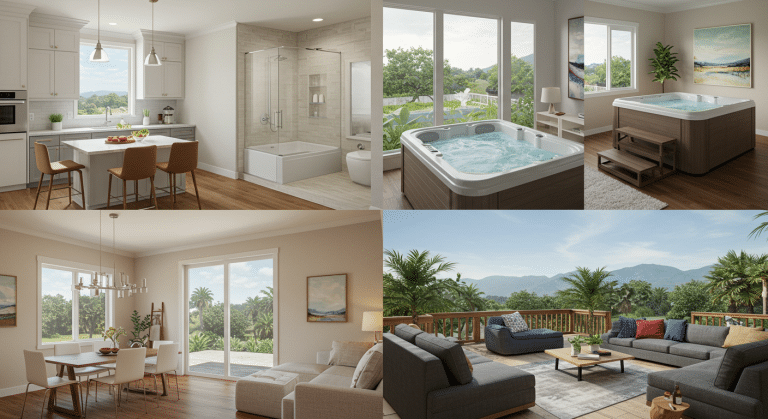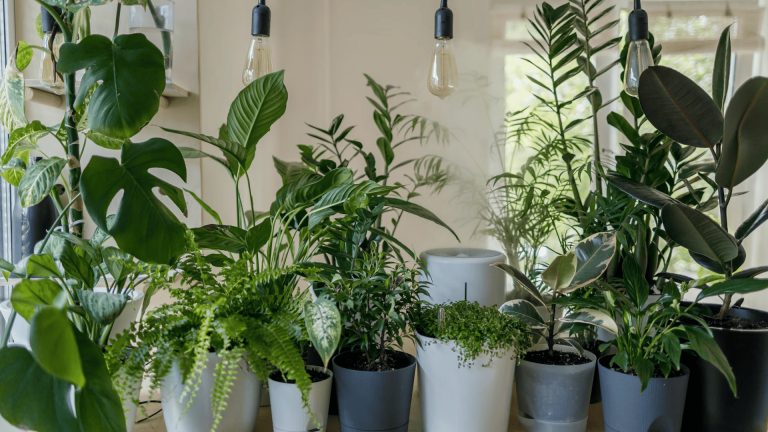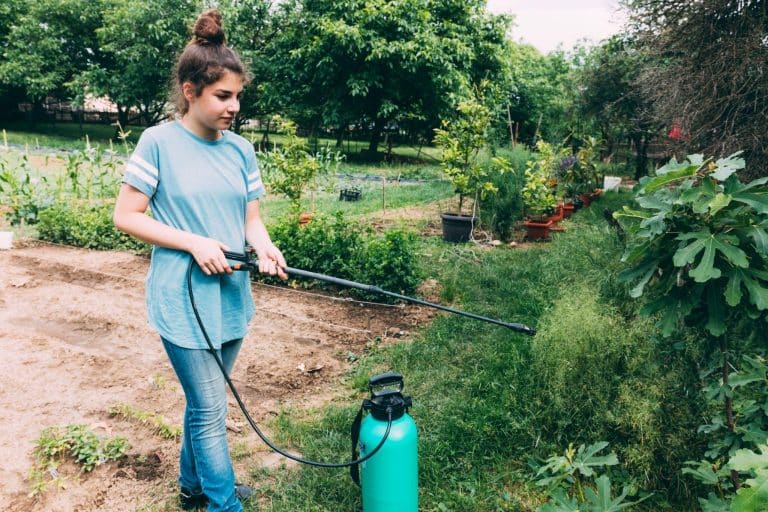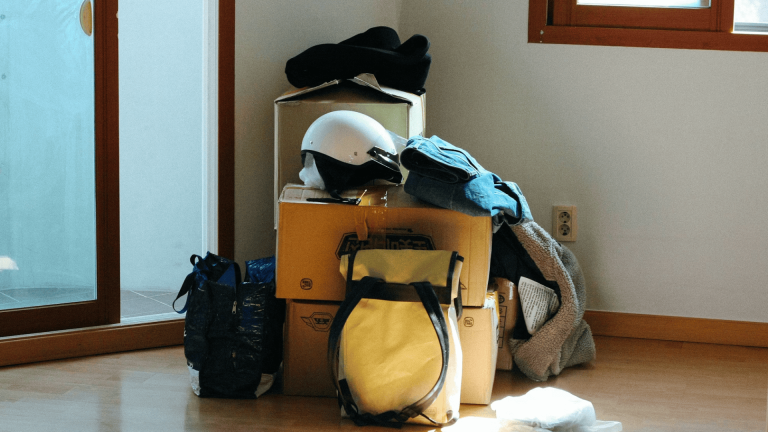There’s a reason so many homeowners chase the dream of a higher property value. But the reality? Not every project delivers. Some upgrades are like planting seeds in fertile soil; others are more like tossing cash into a wishing well. The trick is figuring out which is which.
This guide doesn’t promise certainty, but it does offer a roadmap:
- Six projects that tend to boost value and catch buyers’ eyes
- Three common upgrades that rarely pay off (and why the hype doesn’t match reality)
- Pitfalls that trip up even the savviest renovators
- A few expert-backed tips, though even the experts don’t always agree
7 Home Improvement Projects That Add Value
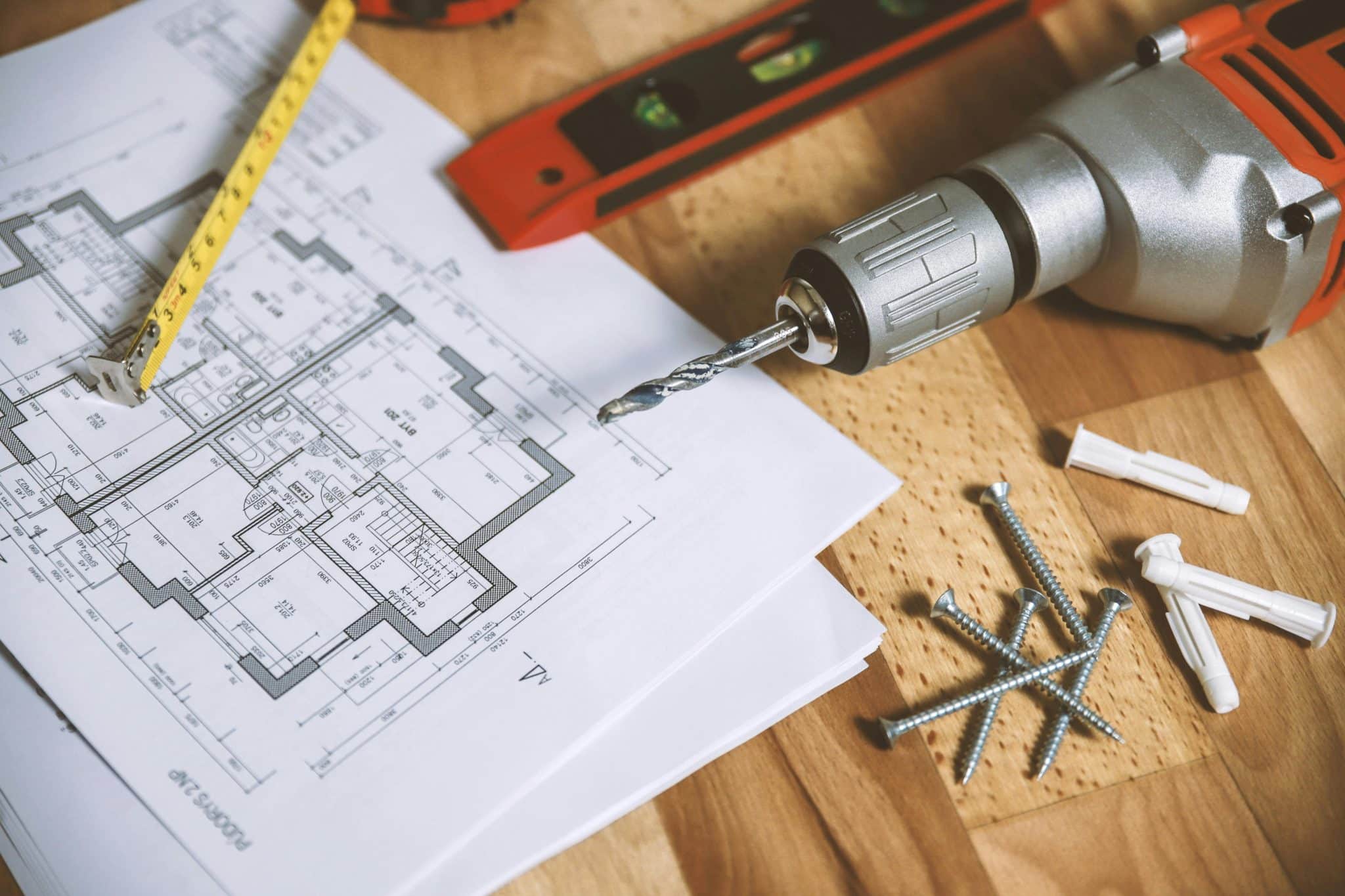
1. Minor Kitchen Remodels
The kitchen, supposedly the heart of the home, or so the real estate agents say. It’s hard to argue with the data: buyers consistently rank kitchens as a top priority. But does that mean every kitchen upgrade is a winner? Not quite.
Small changes, such as refacing cabinets, swapping out tired countertops, or upgrading to a 40-inch oven, can transform the space without draining the bank account. Minor remodels tend to recoup 70–80% of their cost, but only if the upgrades don’t veer into luxury territory. Go too custom, and the next buyer might just see a headache.
What to Update (But Not All at Once)
- Reface or paint cabinets for a fresh look (unless the woodwork is already a selling point).
- Replace old countertops with quartz or granite, unless the neighborhood prefers something else.
- Upgrade to stainless steel or energy-efficient appliances, but don’t chase every trend.
- Add modern lighting and hardware, but skip the fads.
ROI and Common Mistakes
Minor remodels usually beat upscale renovations for ROI. But there’s a catch: high-end custom features rarely pay off unless the whole neighborhood is on board. And don’t forget about layout, functionality trumps flash every time. Or so the surveys claim.
2. Bathroom Upgrades
Bathrooms: the unsung heroes of home value. Clean, modern, and functional spaces are what buyers want, or at least, that’s what the market reports say.
A mid-range bathroom remodel (fixtures, tile, vanities) can return 60–70% of the investment. Adding a second bathroom in an older home? Sometimes a game-changer, sometimes just another expense.
High-ROI Updates (With a Grain of Salt)
- Replace outdated fixtures and lighting, unless “vintage” is in.
- Install new tile or refinish existing surfaces, unless the old tile is suddenly back in style.
- Upgrade vanities and add storage, but don’t overdo it.
- Water-saving toilets and showerheads are a plus, unless buyers want luxury.
Avoiding Over-Improvement
Luxury finishes can backfire. Broad appeal is safer, but even that’s no guarantee. And always fix plumbing or moisture issues first; nobody wants a “surprise” after move-in.
3. Curb Appeal Enhancements
First impressions stick. Curb appeal projects are the darlings of ROI charts, but even here, the devil’s in the details.
Simple landscaping, a fresh coat of paint, or new siding can make a home pop. But sometimes, it’s the little things, a new mailbox, updated house numbers, that tip the scales. These upgrades are relatively low-cost, but in a slow market, even the best landscaping can go unnoticed.
Landscaping, Paint, Siding (But Don’t Overthink It)
- Trim shrubs, plant flowers, and mulch beds, unless droughts make that impractical.
- Paint the front door or swap it for steel, unless the HOA objects.
- Power-wash or repaint siding for a clean look, but don’t expect miracles.
Small Details That Matter (Or Don’t)
- Update exterior lighting and house numbers, but don’t get too quirky.
- Repair walkways and add planters, unless buyers want a blank slate.
4. Energy-Efficient Improvements
Energy efficiency: the buzzword that won’t quit. Buyers say they want it, but how much are they willing to pay? That’s up for debate.
Upgrades like new windows, added insulation, or a solar-powered mini split can cut utility bills and attract eco-conscious buyers. These projects often return 65–80% of their cost, and sometimes qualify for rebates. But rebates come and go, and not every buyer cares.
Windows, Insulation, HVAC (Or Something Else?)
- Install double- or triple-pane windows, unless the originals are historic.
- Add attic and wall insulation, but only if it’s needed.
- Upgrade to a high-efficiency furnace, air conditioner, or Reznor heater system, but the payback occurs over time.
Rebates and ROI
Local and federal incentives can sweeten the deal, but they’re not always available. And energy savings? They look great on paper, but real-world results vary.
5. Deck or Outdoor Living Additions
Outdoor living spaces are all the rage until the weather turns. Adding a deck or patio can expand usable space and create an inviting area for entertaining. But ROI swings wildly, from 45–75%, depending on materials, climate, and local demand.
Decks vs. Patios (And the Never-Ending Debate)
- Wood decks offer classic appeal, but maintenance is a chore.
- Composite materials last longer, but cost more.
- Patios are durable and often less expensive, but not everyone wants one.
Cost, ROI, and Regional Factors
Quality construction is non-negotiable; shoddy work can tank value. And what’s hot in one region might flop in another. No guarantees.
A Murphy cabinet bed can also add value to your home, especially for buyers seeking space-saving features.
6. Garage Door Replacement
Who knew the humble garage door could be a secret weapon for ROI? Replacing it can return up to 194% of its cost, at least according to some reports. But is it really that simple?
Cost vs. Value (And a Few Surprises)
- Steel and insulated doors are popular for durability and efficiency.
- Style matters; pick something that fits the home’s architecture.
- Windows and decorative hardware add character, but bold colors can backfire.
7. Garage Interior Upgrades for Enthusiasts
While a new garage door boosts curb appeal, the interior matters too for certain buyers. Car enthusiasts increasingly look for homes with garage features like epoxy flooring, wall storage systems, and equipment such as a tire machine and balancer.
These additions won’t appeal to every buyer, but in the right market—particularly areas with strong car culture—they can differentiate your property and attract premium offers from hobbyists willing to pay for a turn-key workshop setup.
3 Home Improvements That Don’t Add Value
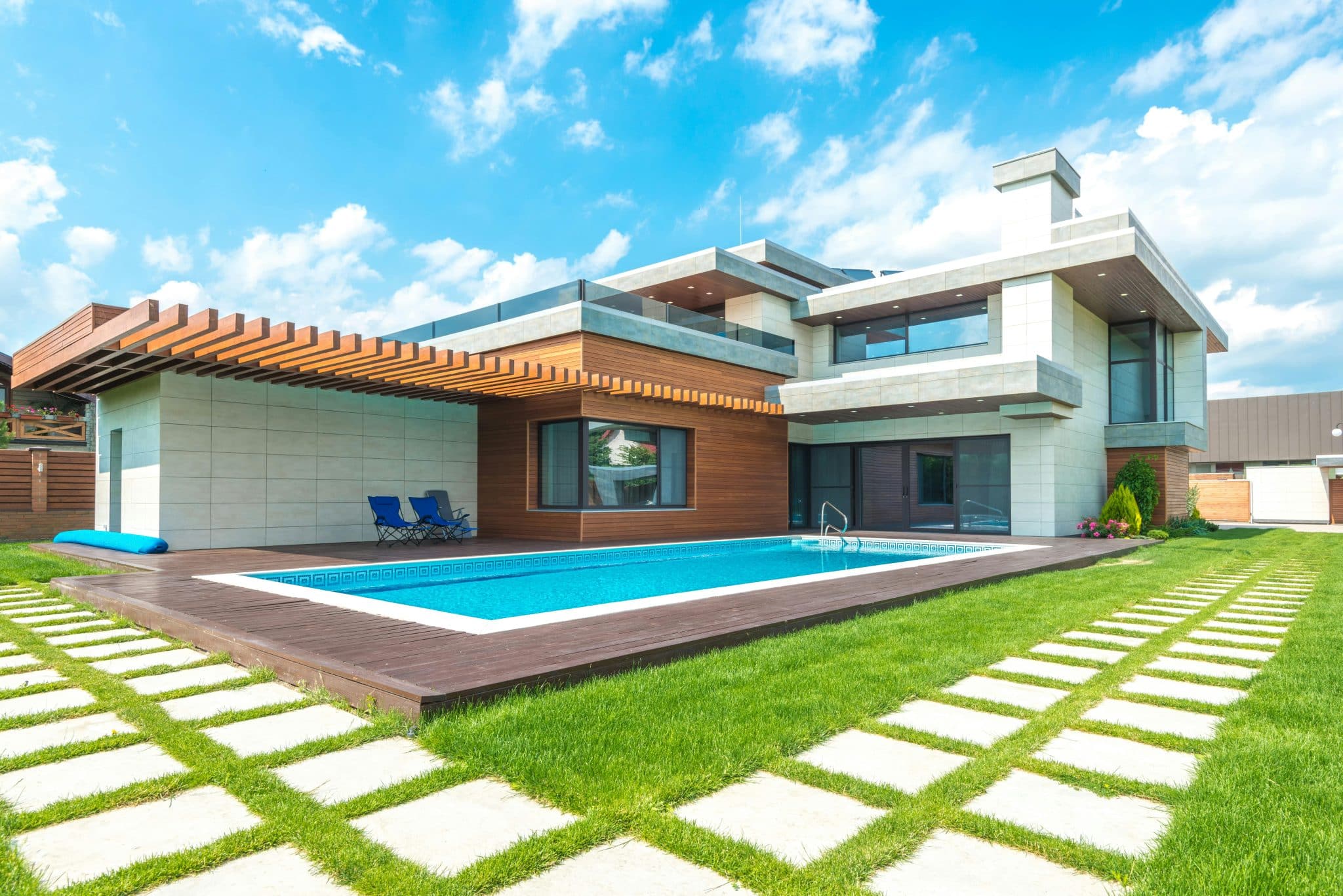
1. Swimming Pools
Pools: the ultimate status symbol, or the ultimate headache? Some buyers love them, but many see pools as expensive, risky, and a hassle to maintain. The numbers say pools recoup only about 50% of their cost, and in some markets, they’re a dealbreaker.
Cost, Maintenance, and Buyer Turn-Offs
- High installation and upkeep costs are just the start.
- Insurance premiums may rise, and not everyone wants the liability.
- In cooler climates, pools can actually lower a home’s appeal.
2. High-End Luxury Renovations
Luxury upgrades, custom cabinets, imported stone, spa bathrooms, sound impressive. But do they pay off? Rarely. If your home becomes the priciest on the block, it might just sit on the market.
Why ROI Drops (And Keeps Dropping)
- Upscale kitchens and baths recoup only 40–50% of costs.
- Over-improving can make a home harder to sell, especially if it doesn’t fit the neighborhood.
Neighborhood Standards
Match upgrades to local expectations. Consult a real estate agent before splurging, unless you’re okay with a long wait.
3. Excessive Personalization
Highly customized features, such as themed rooms and built-in aquariums, can limit a home’s appeal. Buyers want to picture their own lives in the space, not undo someone else’s vision.
Examples (And Why They Backfire)
- Converting a garage to a gym or living space can be a turnoff.
- Installing bold, unusual finishes or fixtures might seem fun, but resale value suffers.
How to Keep Upgrades Broadly Appealing
Stick to neutral colors and classic designs. Avoid permanent changes that are hard to reverse, unless you’re planning to stay forever.
High-ROI vs. Low-ROI Home Improvement Projects
Before diving into the details, take a look at this table. However, don’t get too comfortable; averages can be misleading, and what works in one neighborhood might not work in another. Still, it’s a starting point for anyone trying to separate smart investments from money pits.
|
Project Type |
Avg. Cost |
Avg. ROI |
Key Risks/Notes |
|---|---|---|---|
|
Minor Kitchen Remodel |
$15,000–$26,000 |
70–80% |
Avoid luxury upgrades; focus on function |
|
Bathroom Upgrade |
$10,000–$19,000 |
60–70% |
Over-improving can reduce ROI |
|
Curb Appeal Enhancements |
$2,000–$10,000 |
80–100% |
Small details matter: landscaping, paint |
|
Energy-Efficient Upgrades |
$5,000–$20,000 |
65–80% |
Windows, insulation, HVAC; check for rebates |
|
Deck/Outdoor Living Space |
$7,000–$15,000 |
45–75% |
Regional demand varies; quality matters |
|
Garage Door Replacement |
$1,500–$4,000 |
90–194% |
High ROI, easy curb appeal win |
|
Swimming Pool Installation |
$30,000+ |
~50% |
High maintenance, not for all buyers |
|
High-End Luxury Renovations |
$20,000+ |
40–50% |
May not fit the neighborhood; limited appeal |
|
Excessive Personalization |
Varies |
Low |
Custom features can alienate buyers |
It’s tempting to treat these numbers as gospel, but real estate markets have a way of rewriting the rules overnight. Some projects that look like slam dunks on paper end up gathering dust, while others, dismissed as “risky,” suddenly become the talk of the block.
Common Mistakes and How to Avoid Them
Plenty of homeowners fall into traps that shrink ROI. Over-improving for the neighborhood, skipping necessary maintenance, or ignoring local trends can all backfire.
1. Over-Improving for the Neighborhood
Don’t make your home the priciest on the block. Research comparable properties before renovating, or risk pricing yourself out.
2. Skipping Maintenance for Upgrades
Address repairs before cosmetic changes. A leaky roof or old wiring will turn off buyers, no matter how nice the kitchen looks.
3. Ignoring Local Market Trends
Consult real estate agents for advice. Track which features are in demand in your area; trends change fast.
Maximizing Your Home’s Value: Expert Tips
Strategic planning is the name of the game. Local agents, neutral upgrades, and regular maintenance are the basics. But even the basics aren’t foolproof.
- Get a market analysis before starting major projects.
- Ask which upgrades buyers value most in your area.
- Choose timeless finishes and colors; trends fade fast.
- Keep up with repairs and regular upkeep.
- Save receipts and documentation for all work; transparency helps.
FAQs
Are there home improvements that don’t add value?
Absolutely. Swimming pools, high-end luxury renovations, and excessive personalization are notorious for underperforming. Yet, in rare cases, a pool or a custom feature might be the very thing a buyer wants, but don’t count on it.
How can a home improvement project add value?
Broad appeal, functionality, and quality are the usual suspects. Consulting local real estate agents and researching in-demand features can help, but even then, there’s no guarantee. Sometimes, what’s “hot” one year is “out” the next.
Should a homeowner DIY or hire a professional for a home improvement project?
DIY works for simple tasks like painting or landscaping. For anything complex, think electrical, plumbing, or major remodels, licensed professionals are the safer bet. But even pros can make mistakes, so check references and reviews.


